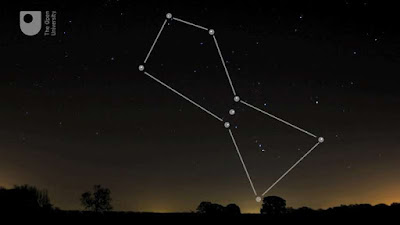CHAPTER 17
STARS AND THE SOLAR SYSTEM
Here is the answer of chapter 17 STARS AND THE SOLAR SYSTEM of NCERT science of class 8.The complete solution of CHAPTER 17 STARS AND THE SOLAR SYSTEM is given here which is prepared subject expert. Some important extra questions and important points about Chapter 17 are also given.
Ques 1. Why does phases of the moon occur?
Ans. We can see the moon due to the reflection of sunlight incident on it towards us. Hence, we can see only the part of the moon that reflects light towards us. As the position of the moon changes from day to day. Sunlight portion of the moon facing the earth changes too and this cause the phases of moon.
Ques 2. In which part of the sky can you find venus if it is visible as a evening star?
Ans. We can find venus in the western part of the sky after sunset as an evening star.
Ques 3. Name the largest planet of the solar system?
Ans. Jupiter is the largest planet in the solar system.
Ques 4. What is constellation? Name any two constellation.
Ans. A group of stars that appear to form a pattern in the sky is known as constellation.
The orion and the Ursa major are two examples of constellation.
Ques 5. Draw sketches to show the relative positions of prominent stars in:-
a) Ursa major
b) Orion
Ans. a) One of the most famous constellation you can see during summers in the early part of the night is the Ursa major. It is also known as Big dipper great bear and saptarishi it consists of seven prominent star three in the handle and four in its Bowl as shown in fig below.
b) The orian can be seen during winter late in the evening. It is also known as a hunter. The orion consists of eight prominent stars as shown in the figure.
Ques 6. Name two objects other than planets that are members of solar system.
Ans. Meteors and asteriods are the objects that are members of solar system.
Ques 7. Explain how can you locate the pole star with the help of Ursa Major?
Ans. First locate the position of Ursa major and identify the two bright stars at the end of it bowl shape. Imagine a line connecting these two stars, when this line is extended towards north it meet a bright star. This bright star is the pole star.
Ques 8. Do all stars in the sky move? Explain.
Ans. No, all the stars in the sky except pole star, appear to move from east to west. This is due to the rotation of earth from West to east about its axis of rotation. The pole star is situated above and along the axis of the earth, to the north and hence it appears to be at rest and can be observed from any place in the northern hemisphere.
Ques 9. Why is the distance between stars expressed in light years? What do you understand by the understand by the statement that a star is eight years away from the earth.
Ans. Distance between the star is too large to measure with normal units of distance. They are also inconvenient to express in kilometre. So it is expressed in light years. A light year is the distance travelled by light in one year. When we say that a star is eight light year away from earth. It means that the distance between the star and earth is equal to the distance travelled by the light in eight years. It will take us eight years to travel from earth to that star if we travel at the speed of light.


Comments
Post a Comment
Don't worry,We don't spam.